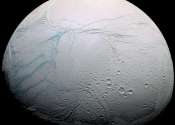Yolk-shell nanocrystals with movable gold yolk: Next generation of photocatalysts
Owing to their unique permeable, hollow shell structures with inner, movable cores, yolk-shell nanocrystals are suitable for a wide variety of applications. Yolk-shell nanocrystals consisting of a gold core with various semiconductor ...









